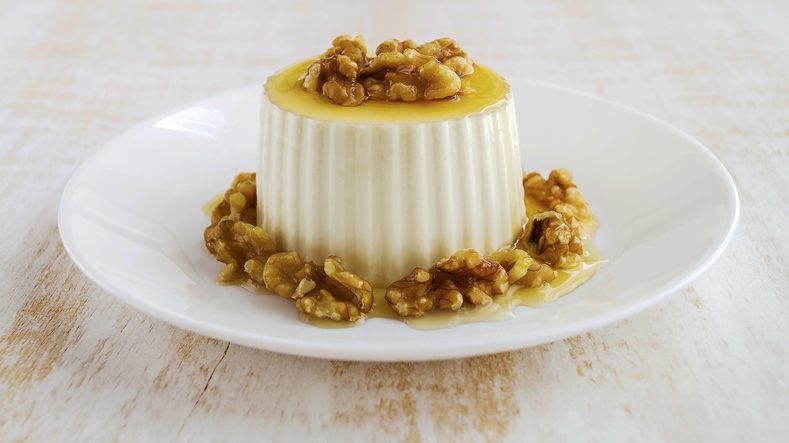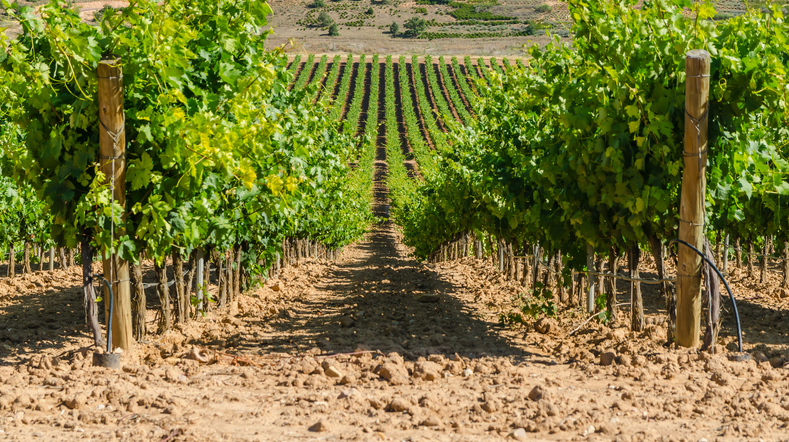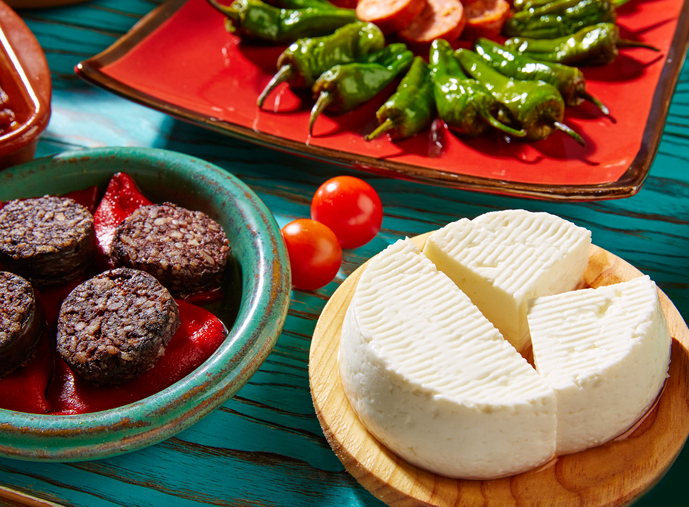Burgos has always been the source from which a wide variety of tourist attractions that characterise the area. A geographical point popular with tourists that focuses on inland leisure and entertainment, and where gastronomy plays an important role
Pubs and restaurants spread throughout the province reflect ‘Burgos’ great cuisine’, where intense flavours like morcilla (blood sausage) and lechera (suckling lamb) accompany the delicious of Burgos fresh cheese DO.
Burgos is a land that’s dominated in the southern part by the classic Ribera del Duero vineyards, and which since 2008 has another new DO, Arlanza, with a more than impressive rating that’s attracting tourists week after week from all over the world.
Designations of Origin which are cultural heritage in themselves
Morcilla from Burgos is made from different parts of the pig, paprika, pepper, and ‘horcal’ onions is noted for being one of the most emblematic dishes of the Burgos cuisine. Rice wasn’t added to this age-old sausage until the 18th century, which was defined by many so-called foodies as ‘bland, tasty and spicy’.

The areas in and around Arlanza and Aranda de Duero are highly recommended place to taste and enjoy the much sought-after lechera (suckling lamb). The juiciness of the meat makes it a true delicacy, and many claim the lamb cutlets to be the best of this Burgos’ dish, which is usually enjoyed with farmhouse bread, olive oil cake and local wine. Pot roasted lamb is cut into quarters and cooked over a low heat is always a welcome dish at any time of the year.
But if there’s one dish that always manages to surprise tourists visiting Burgos in search of its incredible gastronomy, it has to be the olla podrida stew.This popular, traditional dish, made from beans, owes its name to the dish ‘olla poderida’ (the pot of the powerful), which only the wealthy could afford. Olla podrida is traditionally cooked in an earthenware pot over several hours. Today, this dish is still faithful to tradition, being divided into two parts: the stew made from Ibeas de Juarros beans acts as a prelude to its corresponding B-side, made from morcilla, chorizo, suckling lamb and pork belly.

Another ‘King of all Kings’ is undoubtedly Burgos fresh cheese, mild in flavour and the perfect accompaniment to any type of meal. Originally it was made from raw sheep’s milk and animal rennet, but nowadays it’s more common to find it made from pasteurised sheep’s milk, cow’s milk or a mixture of both. Rennet salts and animal calcium are also added before it’s drained and put into moulds and mildly salted. This cheese has an intense white colour, with a very fine rind or sometimes no rind at all and is well-known and often imitated all over Europe. Since ancient times, Burgos cheese is usually accompanied by other foods such as honey, quince and other jams and is the perfect end to any meal, although it can also be used in salads.
With endless possibilities for preparing it, from raw morcilla (boiled) to its role as an ingredient in the famous Burgos stew ‘olla podrida’, and in other bean and chickpea-based stews. It’s also an important ingredient today in haute cuisine, especially in different dishes with from puff pastries and creams.
The land of red wine
The Burgos winemaking tradition is written in stone in the Ribera del Duero and Arlanza designations of origin, and is a DO that’s currently enjoying great popularity.
Born in 2007, although its origins date back to the 10th century, this contemporary DO comes from a land that some claim is home to Spain’s most excellent wines. The wineries in the region are mostly family-run, welcome visitors and offer other varieties responsible for the rest of its wines: Mencía, Merlot, Cabernet Sauvignon, Petit Verdot, Albillo or Viura. Lerma is the headquarters of the Consejo Regulador Denominación de Origen Arlanza (Regulatory DO Council), with wines grown in this region having the perfect climatic conditions to achieve an intensity of flavours that are known and loved the world over. Sixteen wineries and close to a dozen producers shape the wine-producing map of Arlanza, which is an area of great cultural interest that has other emblematic geographical bastions in Santo Domingo de Silos, Covarrubias, Santa Maria del Campo and Mahamud.

In the south of the province, the Ribera del Duero DO was primarily responsible for putting Burgos on the national and international wine map. These are wines with a lot of personality and balance. Rosés and reds (young, crianzas, reservas and gran reservas, whose fruity aromas are full of fresh flavours that blend with the sensory world of aged wood.
More than 100 wineries are located under this designation of origin in Burgos, which remains more than ever the ‘Host and Home’ of many gastronomic trends.







